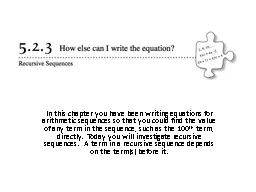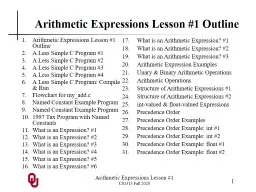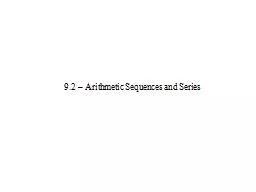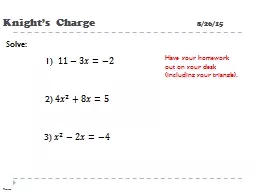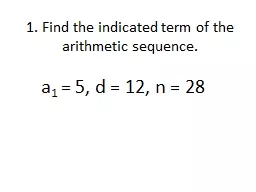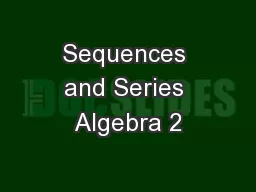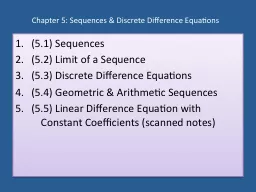PPT-In this chapter you have been writing equations for arithmetic sequences so that you
Author : luanne-stotts | Published Date : 2020-04-10
th term directly Today you will investigate recursive sequences A term in a recursive sequence depends on the terms before it 571 Look at the following sequence
Presentation Embed Code
Download Presentation
Download Presentation The PPT/PDF document " In this chapter you have been writing e..." is the property of its rightful owner. Permission is granted to download and print the materials on this website for personal, non-commercial use only, and to display it on your personal computer provided you do not modify the materials and that you retain all copyright notices contained in the materials. By downloading content from our website, you accept the terms of this agreement.
In this chapter you have been writing equations for arithmetic sequences so that you: Transcript
Download Rules Of Document
" In this chapter you have been writing equations for arithmetic sequences so that you"The content belongs to its owner. You may download and print it for personal use, without modification, and keep all copyright notices. By downloading, you agree to these terms.
Related Documents

